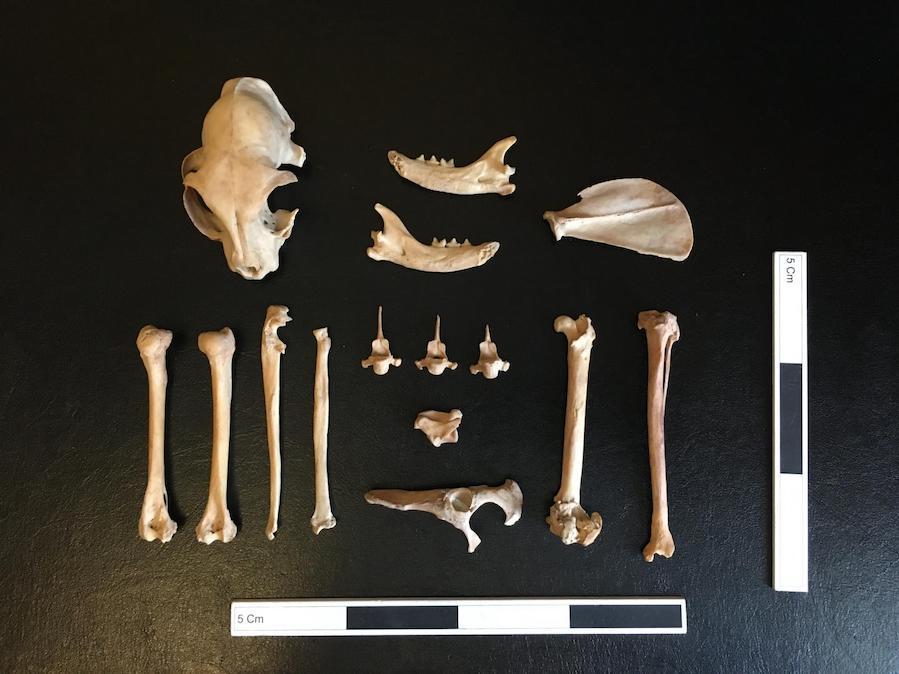attempto online
16.07.2020
The earliest cat on the Northern Silk Road
The Dzhankent project directed by Prof. Heinrich Härke (Department of Medieval Archaeology, Institute of Pre- and Protohistory, Eberhard Karls University of Tübingen) has led to the identification of the earliest domestic cat yet found in northern Eurasia.
Since 2011, the site of Dzhankent, located just east of the Aral Sea (Kazakhstan), has been the object of international research and excavations by archaeologists and other specialists from Tübingen, Moscow and the regional Korkyt-Ata State University of Kyzylorda. The sharp-eyed archaeozoologist on the team, Dr. Ashleigh Haruda from Martin Luther University Halle-Wittenberg (Germany), spotted the bones of a feline while looking through the large quantities of animal bones from the excavation, and immediately realized the significance of the find.
Last year, she assembled an international team to study all aspects of this cat, and obtain all possible information from the largely complete skeleton. As a result, we now have an astonishingly detailed picture of a tomcat that lived and died in the late 8th century AD in a large village on the Syr-Darya river, not far from the Aral Sea (as it was then). X-rays, 3D imaging and close inspection of the bones revealed a number of serious fractures that had healed, meaning that humans must have looked after the animal while he was unable to hunt. In fact, he was looked after quite well: in spite of his disabilities, he reached an age of well over one year, probably several years. Also, stable isotope analysis showed that this tomcat enjoyed a high-protein diet, most likely fish if the scientific data, the fishbone finds from the site and the local environment are anything to go by.
But even more intriguing is what this interdisciplinary study says about the relationship between humans and pets at that time. We know from 10th century Arab geographers that Yengi-kent (as Dzhankent was called then) was a town where the ruler of the Turkic Oguz nomads had his winter quarters. But not only is this two centuries after the time when the tomcat lived here: we also know from ethnographic studies that nomads do not keep cats – or rather, cats may temporarily live in nomad camps, but they do not follow the movements of the nomads with their herds. Cats thrive on small rodents which are attracted by human food stores, mostly grain, and nomads do not have large grain stores; those are typical of villages and towns, and that is exactly where the history of cats and cat-keeping started several thousand years ago, in the western Mediterranean, Mesopotamia and Egypt.
So the presence of Dzhanik (as the archaeologists on the project have begun to call him) at this settlement in the delta of the Syr-Darya implies that it was reasonably large, with a sedentary agricultural population, even 200 years before it was surrounded by big walls and was called a ‘town’ in the written sources. This inference fits the provisional ideas of the archaeologists about the origins of Dzhankent: the later town of the 10th century grew out of a large fishing village which, as early as the 7th/8th centuries, had trade links to the south, to the Iranian civilization of Khorezm (Chorasmia) on the Amu-Darya river. Khorezmian traders who operated along the ancient Silk Road should have been interested in Dzhankent, located as it was on the river which around AD 600 became the route of the Northern Silk Road, connecting Central Asia (and ultimately, China) to the Volga, the Caspian and Black Seas and the Mediterranean. And it is along one of these trade routes that domestic cats must have reached Dzhankent, perhaps with a caravan or more likely on a river boat or sailing ship. Because Dzhanik was not a captured, tame wildcat which had lived in the Aral Sea region: his DNA shows that he was most likely a true representative of the Felis catus L. species, the kind of modern domestic cat. And this makes him the earliest domestic mouser in Eurasia north of Central Asia and east of China, about 1200 years ago.
The Dzhankent project has been funded by the Wenner-Gren Foundation and the Deutsche Forschungs-Gemeinschaft (DFG), the analysis of the cat remains by the University of Leicester and the Max Planck Gesellschaft.
Department of Medieval Archaeology, Institute of Pre- and Protohistory, University of Tübingen
Open-access publication:
Haruda, A.F., Ventresca Miller, A.R., Paijmans, J.L.A., Barlow, A., Tazhekeyev, A., Bilalov, S., Hesse, Y., Preick, M., King, T., Thomas, R., Härke, H. and Arzhantseva, I. 2020. The earliest domestic cat on the Silk Road. Scientific Reports 10: 11241.
https://www.nature.com/articles/s41598-020-67798-6#citeas

